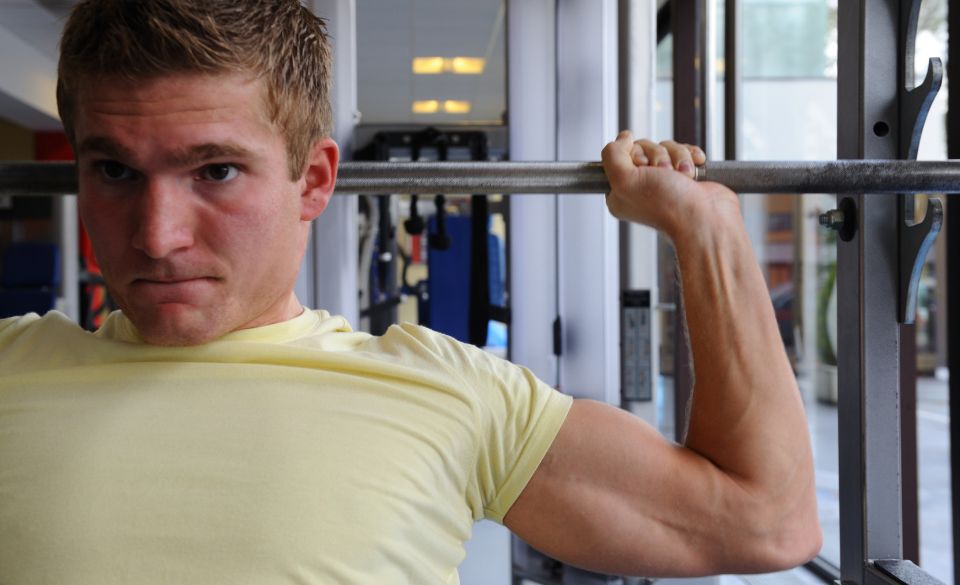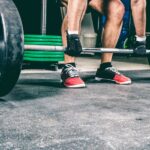
Overhead Press Exercise: How to Build Strong Shoulders & Upper Body
Page Contents
The Overhead Press, also known as the Shoulder Press or Military Press, is a classic compound exercise that has been used by athletes and fitness enthusiasts for decades. This exercise is a staple in many strength training and bodybuilding programs, and for good reason. The Overhead Press targets multiple muscle groups, including the shoulders, triceps, and upper back, and can help build strength, power, and muscle mass. In this article, we will take an in-depth look at the Overhead Press, including its benefits, proper form and technique, variations, and tips for maximizing its effectiveness. Whether you’re a beginner or an experienced lifter, the Overhead Press is an exercise that should not be overlooked.
What is the Overhead Press?
The overhead press, also known as the military press or shoulder press, is a classic strength training exercise that has been around for decades. It is a compound movement that targets several muscle groups in the upper body, including the deltoids, triceps, and upper back muscles.
A study published in the Journal of Strength and Conditioning Research found that the overhead press was one of the most effective exercises for activating the deltoid muscles of the shoulder. The study analyzed electromyographic (EMG) activity in the deltoid muscles during several shoulder exercises and found that the overhead press produced the highest muscle activation.
Another study published in the Journal of Athletic Training found that the overhead press was one of the most effective exercises for developing upper body strength and power. The study measured maximal strength and power output in collegiate athletes and found that adding overhead pressing exercises to a training program resulted in significant improvements.
The overhead press is a versatile exercise that can be performed using various equipment, including barbells, dumbbells, kettlebells, and resistance bands. Each equipment provides a unique stimulus to the muscles, allowing for variety in training and progression. For example, using dumbbells or kettlebells requires more stabilization from the core and upper back muscles, making it a great option for improving overall shoulder stability.
In addition to building strength and power, the overhead press has several other benefits. It can improve posture by strengthening the upper back muscles and promoting proper alignment of the spine. It can also enhance athletic performance by improving shoulder stability and reducing the risk of injury.
Overall, the overhead press is a classic exercise that has stood the test of time for good reason. It is a highly effective movement for building upper body strength and power, improving posture, and enhancing athletic performance.
What Muscles Do the Overhead Press Work?
The overhead press is a compound exercise that targets several muscle groups in the upper body, including the deltoids, triceps, and upper back muscles. Understanding which muscles are worked during the overhead press can help you better understand the exercise and tailor your training program to meet your goals.
The primary muscle worked during the overhead press is the deltoid muscle, which is the muscle that covers the shoulder joint. A study published in the Journal of Strength and Conditioning Research found that the overhead press produced high levels of deltoid muscle activation compared to other shoulder exercises, making it an effective exercise for targeting this muscle group.
In addition to the deltoids, the triceps brachii muscles located on the back of the upper arm are also worked during the overhead press. These muscles are responsible for extending the elbow joint and are activated as you push the weight overhead.
The upper back muscles, including the trapezius and rhomboids, are also worked during the overhead press. These muscles are responsible for stabilizing the scapulae (shoulder blades) during the movement and helping to maintain proper posture throughout the exercise.
The overhead press also engages several smaller muscles in the shoulder and upper back region, including the rotator cuff muscles, which are responsible for stabilizing the shoulder joint, and the serratus anterior muscles, which help to protract the shoulder blades during the upward phase of the movement.
In summary, the overhead press is a compound exercise that targets several muscle groups in the upper body, including the deltoids, triceps, and upper back muscles. By working these muscles together, the overhead press is an effective exercise for building upper body strength and power, improving posture, and enhancing athletic performance.
5 Benefits of the Overhead Press
In addition to building strength and power in the shoulders, triceps, and upper back muscles, the overhead press can also improve posture, enhance athletic performance, and reduce the risk of injury. Here are some of the key benefits of the overhead press, supported by research studies:
Builds upper body strength and power: The overhead press is a highly effective exercise for building upper body strength and power. A study published in the Journal of Strength and Conditioning Research found that the overhead press was one of the most effective exercises for developing maximal strength and power output in collegiate athletes. By progressively increasing weight and intensity, the overhead press can help you build significant upper body strength and power.
Improves posture: Poor posture is a common problem in today’s sedentary society, and the overhead press can help to address this issue by strengthening the upper back muscles and promoting proper alignment of the spine. A study published in the Journal of Physical Therapy Science found that performing the overhead press exercise improved the posture of sedentary women, reducing the risk of developing back pain and other musculoskeletal issues.
Enhances athletic performance: The overhead press can also enhance athletic performance by improving shoulder stability and reducing the risk of injury. A study published in the Journal of Sports Science and Medicine found that including overhead pressing exercises in a training program improved shoulder strength and stability in elite volleyball players, leading to better performance on the court.
Increases bone density: Resistance training has been shown to increase bone density and reduce the risk of osteoporosis, and the overhead press is no exception. A study published in the Journal of Aging and Physical Activity found that resistance training, including the overhead press, improved bone density in postmenopausal women, reducing the risk of fractures and other bone-related injuries.
Versatile exercise: The overhead press can be performed using various equipment, including barbells, dumbbells, kettlebells, and resistance bands. Each equipment provides a unique stimulus to the muscles, allowing for variety in training and progression. This versatility makes the overhead press a great option for athletes, fitness enthusiasts, and anyone looking to build upper body strength and power.
How To Do the Exercise
1. Begin by standing with your feet shoulder-width apart and the barbell resting on the front of your shoulders, with your hands slightly wider than shoulder-width apart and your palms facing forward.
2. Brace your core, engage your glutes, and press the barbell overhead by extending your arms upward.
3. As you press the barbell up, make sure to keep your elbows tucked in and your wrists straight.
4. Once the barbell reaches the top, lock out your arms and pause briefly before lowering the barbell back down to the starting position.
5. As you lower the barbell, make sure to control the descent and avoid letting the weight drop suddenly.
6. Repeat for the desired number of repetitions.
It’s important to note that the overhead press can be done with various equipment, including dumbbells, kettlebells, or even resistance bands. Additionally, proper form and technique are crucial to prevent injury and maximize the effectiveness of the exercise. So, be sure to start with a lighter weight and focus on proper form before gradually increasing the weight.
How Often Should You Do the Overhead Press Exercise?
The frequency of overhead pressing exercises will depend on your fitness goals and training program. It is generally recommended to perform the exercise 1-2 times per week, with adequate rest and recovery time between sessions. It is also essential to use proper form and start with a lower weight, gradually increasing the weight as you become more comfortable with the movement.
Final Words
The overhead press is an effective exercise for building upper body strength, improving posture, and enhancing athletic performance. Incorporating this exercise into your training program can help you become a stronger and more efficient runner. As with any exercise, it is important to consult with a professional before starting a new training routine. Start with a lower weight and focus on proper form to prevent injury and maximize results.


